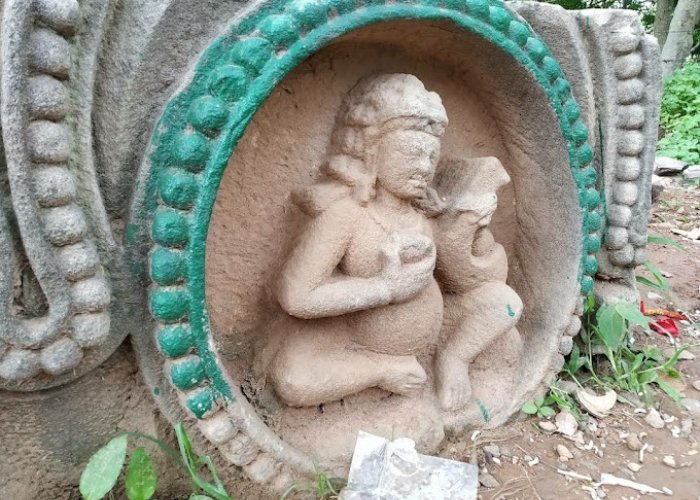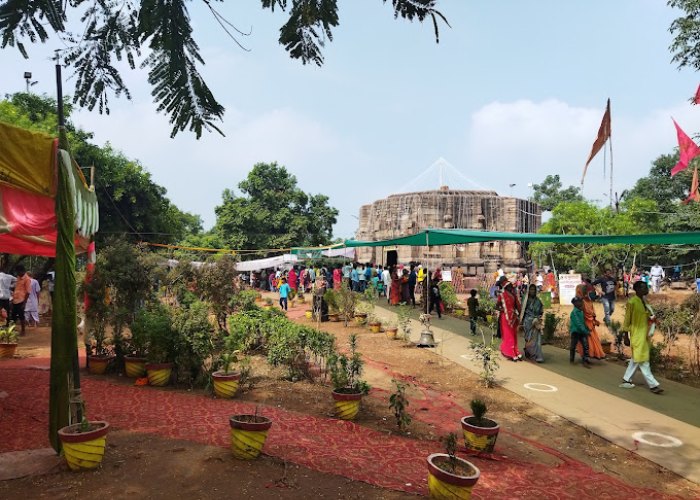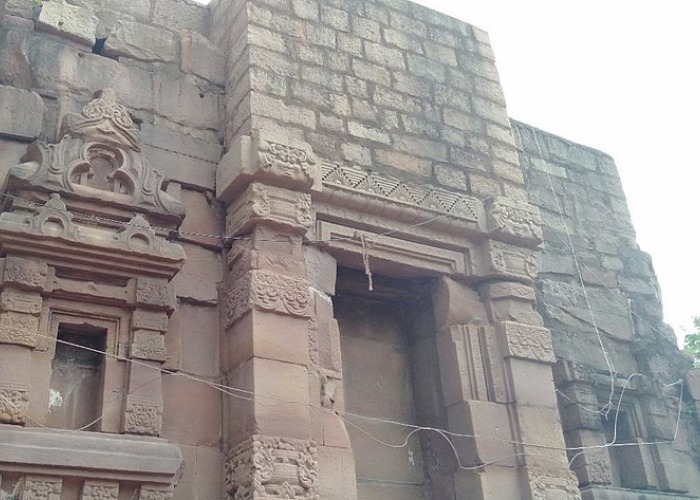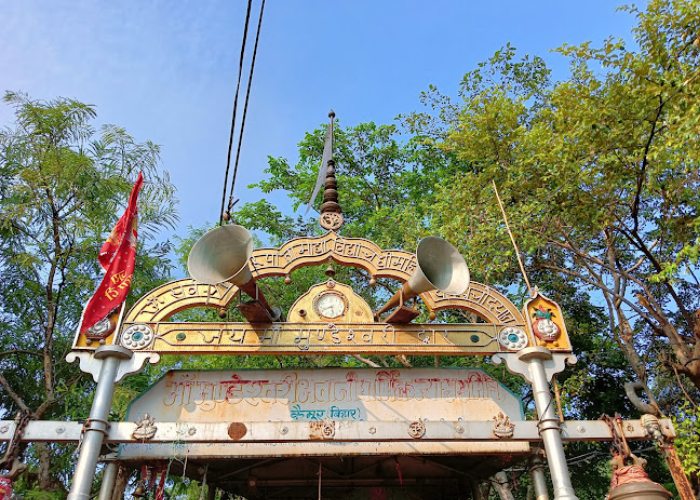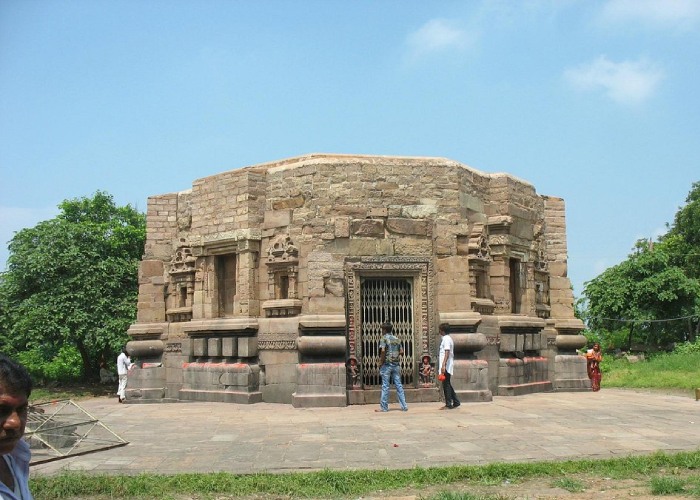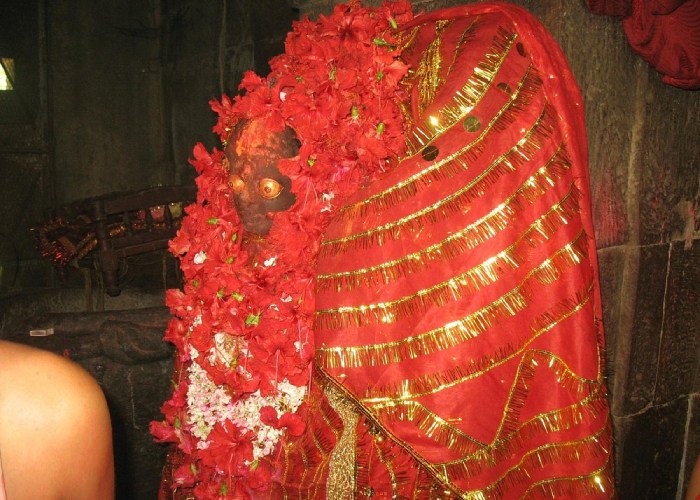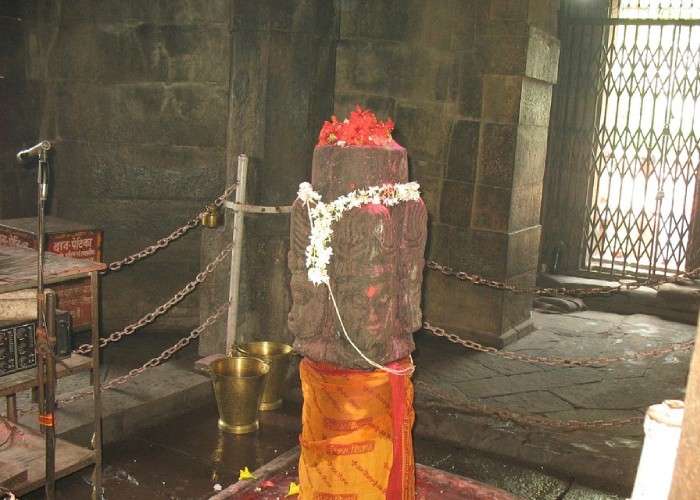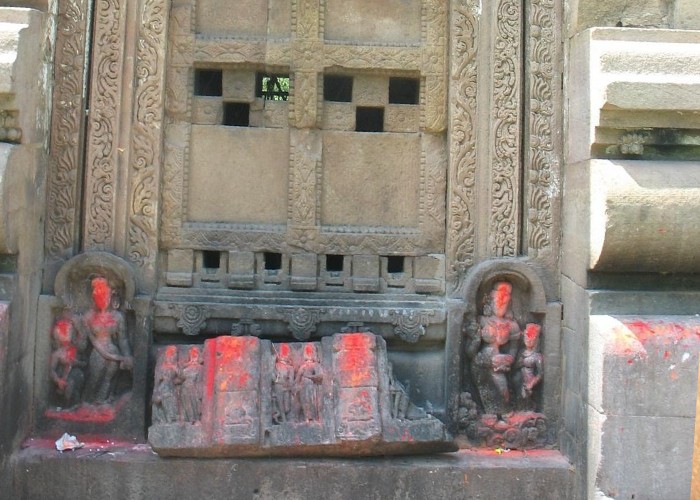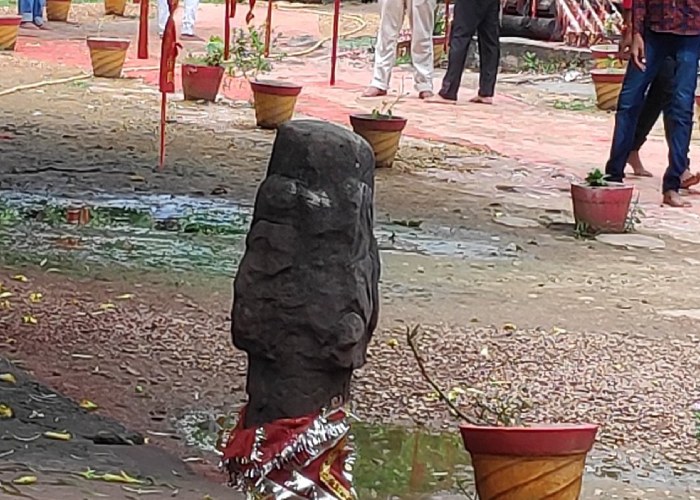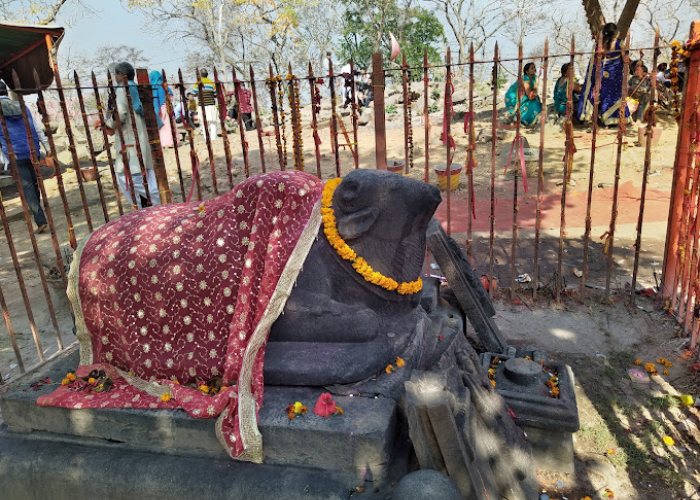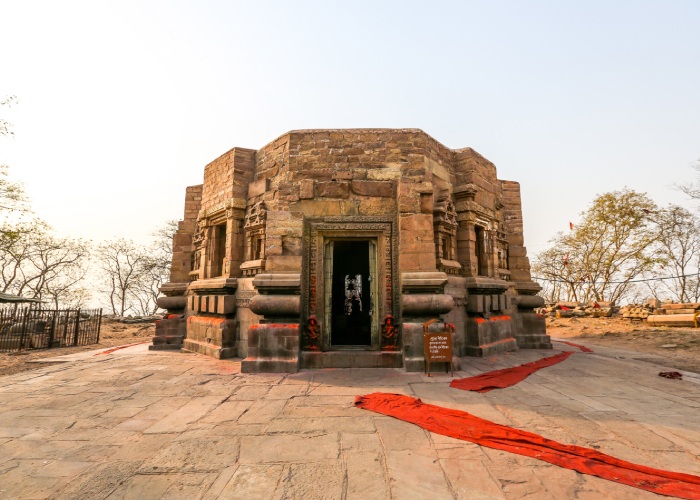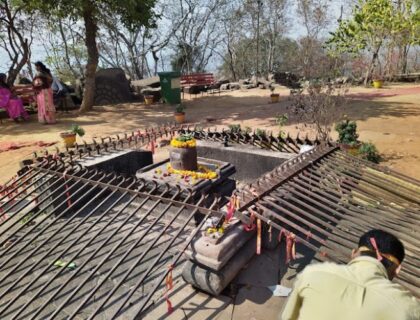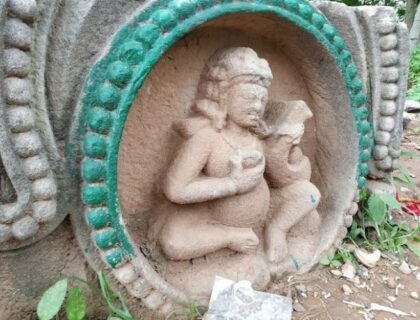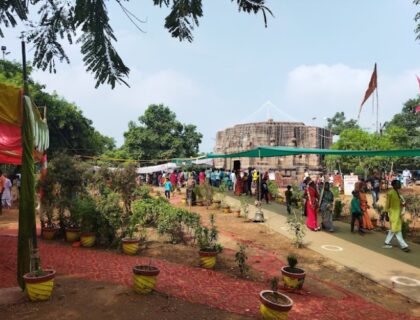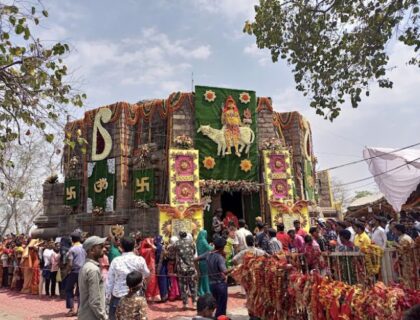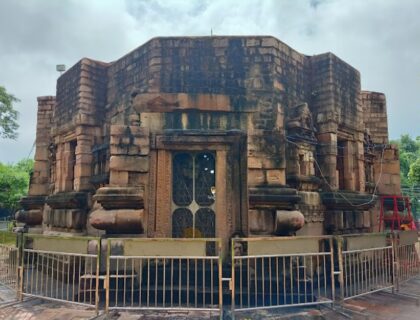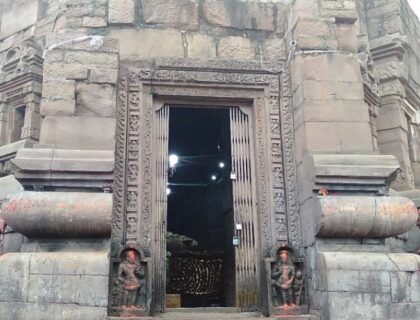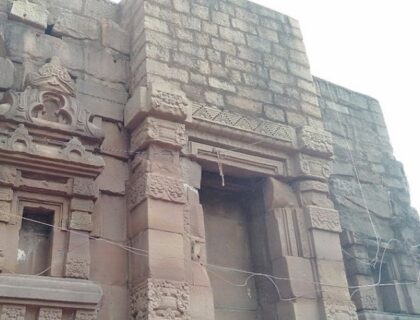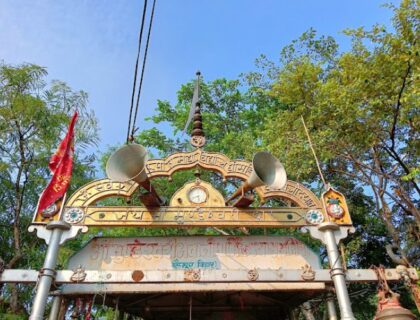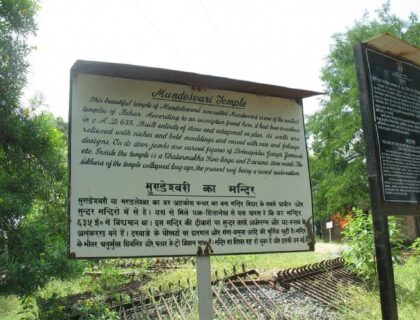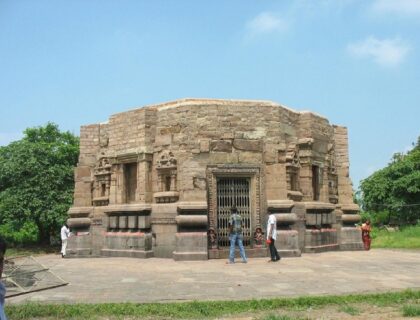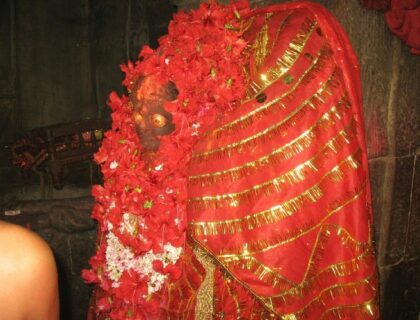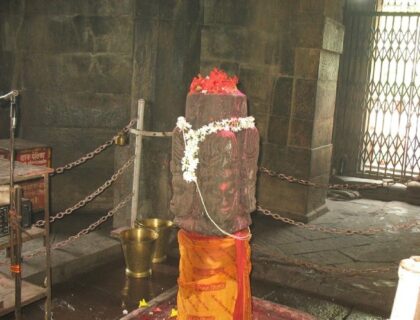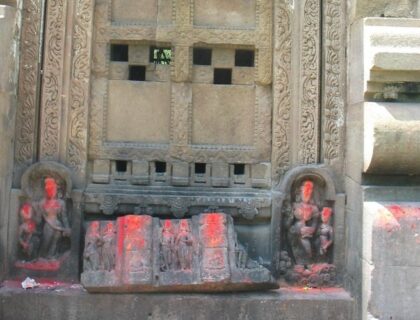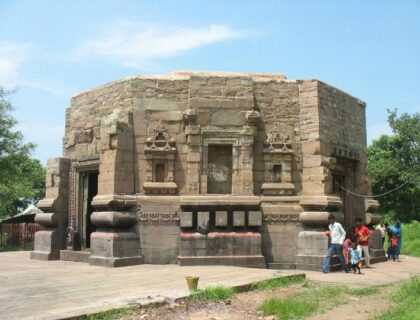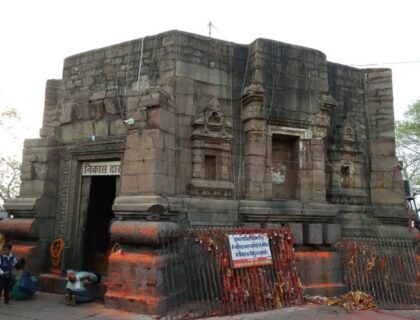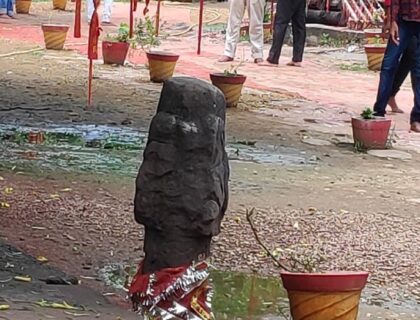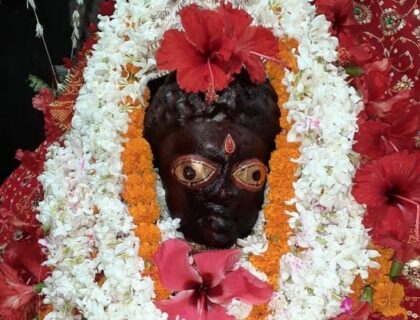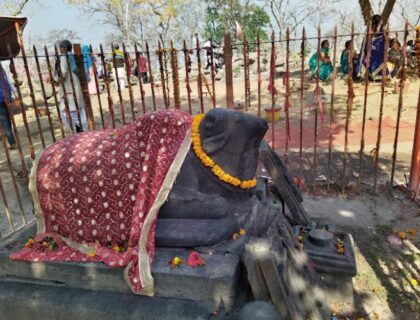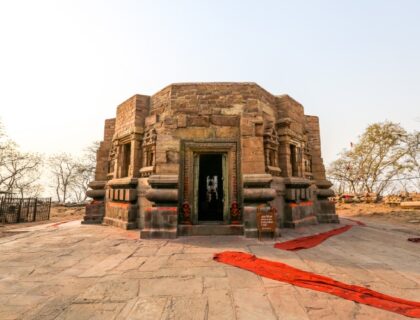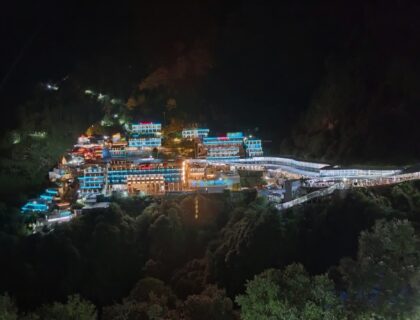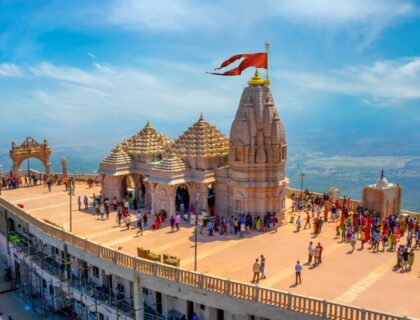Mundeshwari Temple Kaimur
The Mundeshwari Temple is the oldest Hindu temple in the Indian state of Bihar, located at Ramgarh Village, 608 feet on the Mundeshwari Hills of Kaimur plateau near the Son River. Maa Mundeshwari Devi Temple, located in the Mundeshwari Hills, is dedicated to Lord Shiva and Shakti. The temple also features Ganesha, Surya, and Vishnu deities. The Archaeological Survey of India (ASI) dates the temple to 108 AD, and it has been a protected monument since 1915. Mundeshwari Temple is the oldest example of Nagara-style temple architecture.
The surprising thing about this temple is that goats are sacrificed here without bloodshed. Also, you cannot keep your gaze fixed on the mother’s idol for long. The same temple complex also houses a Panchmukhi Shivling, which changes colour three times per day. This temple is also known as Shakti Peeth, and many things about it are well-known, demonstrating its unique religious significance. There are many such mysteries here that no one has been able to uncover until now. According to the inscription found here, this temple dates from around 389 AD, indicating that it is the oldest.
Story/Legend of Mundeshwari Temple Kaimur
The Mundeshwari Temple is both ancient and deeply religious. The story of how the goddess was established in this temple is said to be very interesting. According to popular belief, demons named Chand and Mund lived in this area and tortured people. Mata Bhavani heard their call and came to earth to kill them, but first, she killed Chand. After his death, Mund hid on this hill and fought. However, Mata reached this hill and killed Mund as well. Following this, the location became known as Mata Mundeshwari Devi.
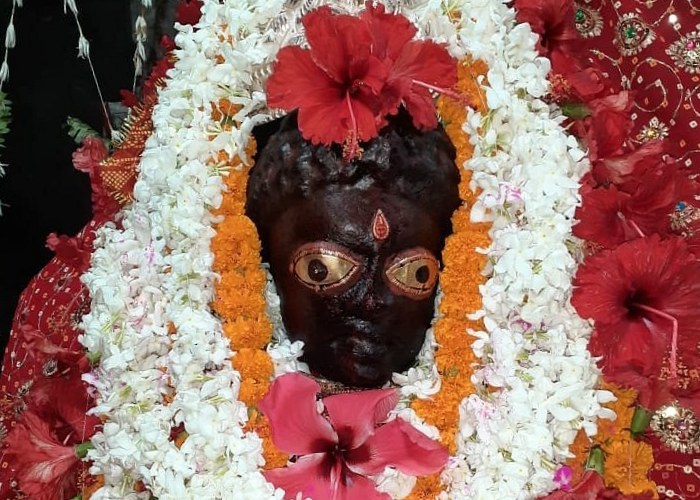
Special Significance of Mundeshwari Temple Kaimur
Mundeshwari Temple is an ancient Hindu temple dedicated to Lord Shiva and Shakti and is regarded as one of the World’s oldest temples. Hindu inscriptions dated 635 CE were discovered in the temple. It is also considered India’s oldest functioning Hindu temple. The temple’s sanctum sanctorum, or garbhagriha, houses Lord Shiva’s four-faced lingam and a niche with Devi Mundeshwari’s idol. The circular yoni-pitha, or base, is also noteworthy, as it has eight petals, one for each of the eight directions.
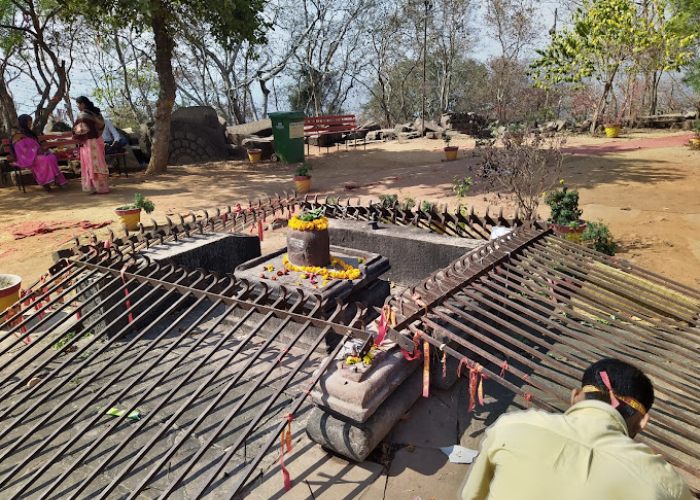
History of Mundeshwari Temple Kaimur
The Mundeshwari Temple was built between 3 and 4 BC, with Lord Vishnu as the main deity. However, the statue eventually failed to withstand the test of time. In 348 AD, another deity, Lord Viniteswara, was installed in the temple. This deity held a secondary position in the temple, ranking below Lord Vishnu. Then, in the seventh century AD, Shaivism gained prominence. This elevated Lord Viniteswara to the temple’s primary deity. His form, the Chatur Mukhalingam, was positioned centrally in the temple. This lingam still sits in the temple’s centre.
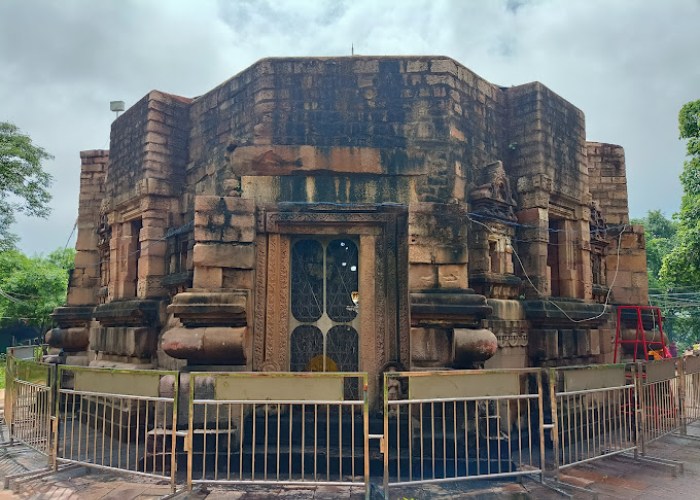
Mundeshwari Temple is an Archaeological Survey of India (ASI) protected monument since 1915. The ASI has recently dated the structure to 108 CE making it the oldest Hindu temple in the country.
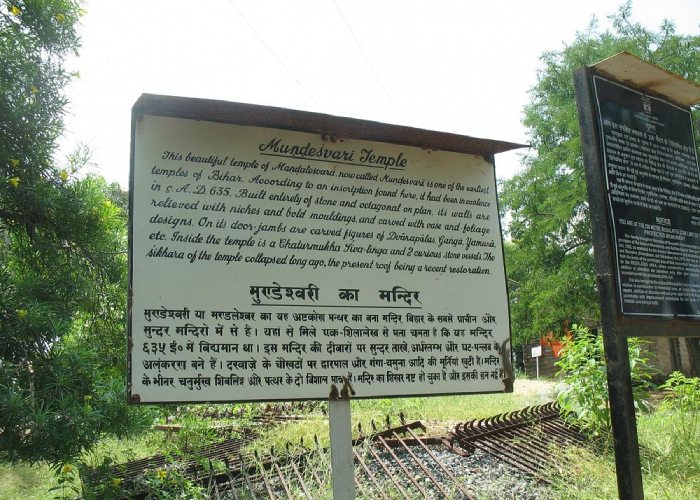
An information plaque at the site indicates the dating of the temple at least to 625 CE and Hindu inscriptions dated 635 CE were found in the temple. The Archaeological Survey of India has restored the temple under instruction from the Union Ministry of Culture.
The architecture of Mundeshwari Temple Kaimur
The Mundeshwari Temple is built of stone and has an unusual octagonal plan. It is the earliest example of Nagara temple architecture in Bihar. There are four sides with doors or windows, and the remaining four walls have small niches for statues. The temple’s shikhara, or tower, has been destroyed. As part of the renovations, a roof was built.
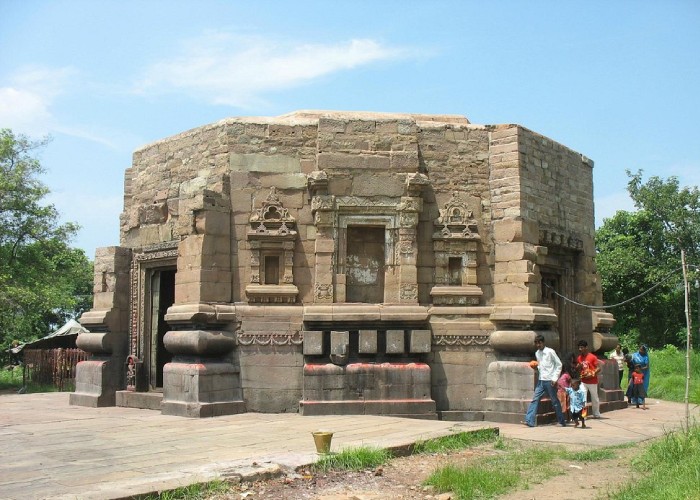
The interior walls feature niches and bold mouldings carved with vase and foliage designs. The door jambs at the temple’s entrance feature carved images of Dvarapalas, Ganga, Yamuna, and numerous other murtis. The main deities in the temple’s sanctum sanctorum are Devi Mundeshwari and the Chaturmukh (four-faced) Shiva linga.
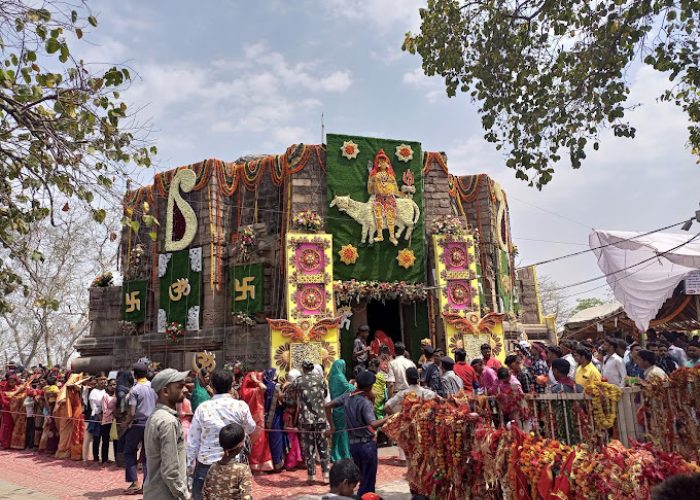
There are also two stone vessels with unusual designs. Even though the Shiva linga is installed in the centre of the sanctum, the main presiding deity is Devi Mundeshwari, who is depicted inside a niche with ten hands holding symbols and riding a buffalo, attributed to Mahishasuramardini. The temple also houses murtis of other popular gods, including Ganesha, Surya, and Vishnu.
Facts about Mundeshwari Temple Kaimur
- Mundeshwari Temple is situated atop a 600-foot-high hill in Kaimur District, Bihar.
- The temple is named after the sculpture of Maa Mundeshwari, and the hill on which it stands is also known as Mundeshwari Hill.
- The Mundeshwari temple is surrounded by loose sculptures of various gods and goddesses, including Kartikeya, Parvati, Surya, Ganesha, and others.
- A foundation stone inscription was discovered on the temple grounds. This is in the Indian Museum in Kolkata.
- In many temples, animals (such as goats) are sacrificed by decapitation. However, in this temple, the goat is laid down, the priest chants a mantra, and the goat passes out. The goat is then thrown rice grains, which causes him to regain consciousness.
- The Mundeshwari Temple is considered very sacred because the Lingam is in self-manifestation mode.
- People who worship here with complete devotion are said to receive all wishes. Furthermore, those suffering from any type of dosha, such as Sarpa or Kalasarpa, are said to be free of these negative energies after worshipping the Lord and performing the rituals.
- Lord Shiva and Lord Kartikeya are believed to be the temple’s main idols.
- The interesting part is that the colour of the shiva ling changes depending on the position of the sun.
- There are four entrances to the temple, one of which is still closed and the other partially open.
- The Nagara architectural style is distinguished by a cruciform ground plan and a tower shaped like a mountain peak.
Famous Festivals In Mundeshwari Temple Kaimur
Millions of people visit this temple every year to celebrate all of the festivals that are held here. Some major festivals held here are
- Durga Puja. (Winter) – Devotees celebrate Navaratri at this temple in the month of Ashwin (Sep-Oct).
- Navaratri. (Summer) – They celebrate other Navaratri in the fortnight of the Chaitra (March-April). Every nine days they worship Navadurga (nine Durgas).
- Diwali – Diwali is one of the most admired and auspicious festivals in the town.
- MahaShivratri – Mahashivratri, “The Great Night of Shiva” is the most significant event in India’s Hindu calendar.
Best Time to Visit Mundeshwari Temple Kaimur
This place is heavenly and spiritual; you can visit it all year. However, the best time to visit this temple is during the monsoon and winter seasons. During the monsoon season, this location receives moderate to heavy rainfall, making it appear heavenly with its greenery and bringing freshness elsewhere.
How To reach Mundeshwari Temple Kaimur
The Mundeshwari Temple is located On Mundeshwari Hills In Kaimur District near the Son River.
By Air: Kaimur does not have an independent airport, so anyone flying into the city must connect through Varanasi Airport, which is the nearest airport. Varanasi is 60 kilometres from Mundeshwari Temple.
By Rail: Bhabua Road Railway Station is the major railway station that connects to this temple. The station is only 30 km from the Mundeshwari Temple.
By Road: Kaimur is 200 km from Patna and 100 km from Varanasi. National Highway 30 connects Kaimur to the capital Patna via Arrah. Aside from that, there are a few state highways in the city.
Also, Read – Mangla Gauri Temple
Support Us
If our content helps you even 1% in gaining information about the temple, please support us by contributing any amount, our UPI ID is - q417999792@ybl Or pay using QR CODE >>> Click Now
Location
Facilities
- Drinking Water
- Pooja Item Shops
- Prasad Shops

